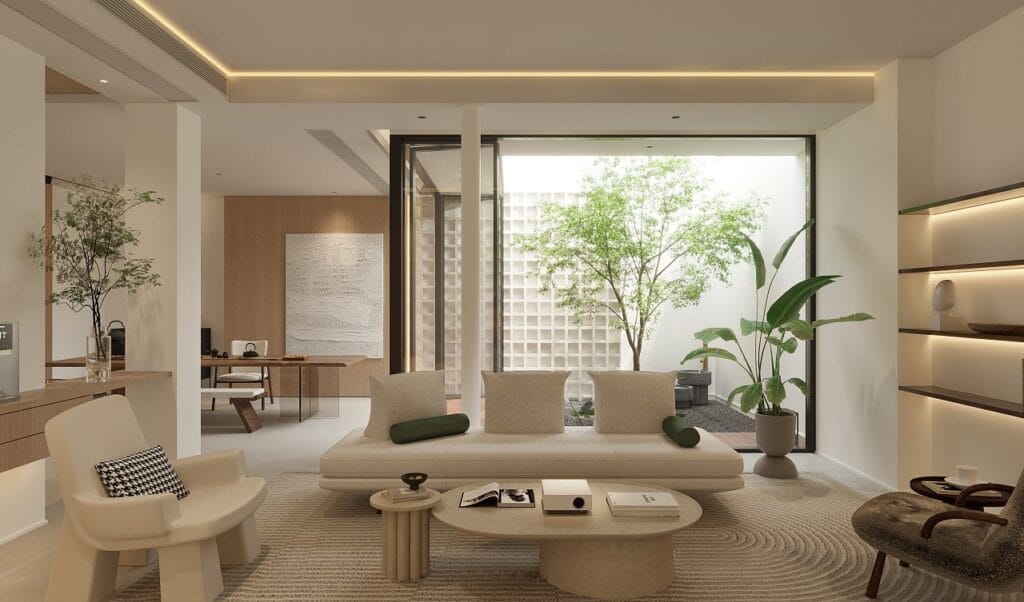
Minimalist interior design emphasizes simplicity, clean lines, and the absence of unnecessary ornamentation. In this context, lighting plays a crucial role in shaping the overall ambiance and functionality of a space. Minimalist lighting is not merely about illumination; it’s about creating a harmonious balance between light and shadow, enhancing the architectural features, and fostering a sense of serenity. Rather than being a focal point, minimalist lighting fixtures often blend seamlessly into the background, serving as functional elements that contribute to the overall design aesthetic. This approach results in uncluttered spaces where light is used strategically to highlight essential areas and create a calming atmosphere.
Current Trends in Minimalist Lighting
Several trends are shaping the landscape of minimalist lighting design today. Linear LED fixtures are gaining popularity for their sleek profile and versatility, often integrated into walls, ceilings, or furniture to provide subtle, indirect illumination. Another prominent trend is the use of recessed lighting, which offers a clean, uncluttered look by concealing the light source within the architecture. Smart lighting systems are also becoming increasingly prevalent, allowing users to adjust the brightness, color temperature, and even create lighting scenes based on their preferences, all while maintaining a minimalist aesthetic. These innovations reflect a desire for both functional and aesthetically pleasing lighting solutions that contribute to a modern and streamlined interior.
Space Perception and Usability Enhancement
Minimalist lighting has a profound impact on how we perceive and interact with a space. By avoiding overly bright or harsh lighting, it can create a more inviting and relaxing atmosphere. Thoughtfully placed lighting can also manipulate the perception of space, making a room appear larger or more intimate. For example, illuminating walls with soft, indirect light can create a sense of openness, while strategically placed spotlights can highlight specific areas or architectural features, drawing attention and adding depth. Functionally, minimalist lighting enhances usability by providing adequate illumination for various tasks without being overwhelming. This thoughtful approach to lighting design ensures that the space is both visually appealing and practical for everyday activities.
Aesthetic Harmony Through Focused Illumination
One of the key principles of minimalist design is the creation of aesthetic harmony through the careful selection and placement of elements. Minimalist lighting plays a vital role in achieving this balance. By focusing on subtle, strategic illumination, it enhances the overall design without distracting from the other elements in the room. The use of neutral color temperatures and dimmable lighting allows for further customization, creating an ambiance that complements the architectural features, furniture, and artwork. This focused approach to lighting design ensures that it seamlessly integrates into the overall aesthetic, contributing to a cohesive and visually pleasing interior.
Functional Design: Beyond Mere Illumination
In conclusion, minimalist lighting in modern interior design is more than just providing illumination; it’s about creating an atmosphere, shaping space perception, and enhancing usability. Current trends, such as linear LEDs, recessed lighting, and smart lighting systems, reflect a desire for both functional and aesthetically pleasing solutions. By embracing simplicity and strategic placement, minimalist lighting contributes to aesthetic harmony, transforming contemporary interiors into serene, uncluttered, and visually appealing spaces.


 Comprehensive Guide to Mold Removal in Hunterdon County: Safeguarding Your Home and Health
Comprehensive Guide to Mold Removal in Hunterdon County: Safeguarding Your Home and Health  Risks of Asbestos in Home Furnaces
Risks of Asbestos in Home Furnaces  Quartz Countertops Sacramento: Enhancing Homes with Timeless Elegance
Quartz Countertops Sacramento: Enhancing Homes with Timeless Elegance  The Durability of Teak Wood Flooring in Humid and Wet Conditions
The Durability of Teak Wood Flooring in Humid and Wet Conditions  The Advantages of Selecting a Local Roofing Contractor in Wales, WI
The Advantages of Selecting a Local Roofing Contractor in Wales, WI  A Comprehensive Guide to Roof Replacement in Florissant, MO: Insights from Leading Roofing Experts
A Comprehensive Guide to Roof Replacement in Florissant, MO: Insights from Leading Roofing Experts  The Benefits of a Fire Pit for Year-Round Outdoor Living
The Benefits of a Fire Pit for Year-Round Outdoor Living  The Role of Minimalist Lighting in Modern Interior Design: Trends and Functional Analysis
The Role of Minimalist Lighting in Modern Interior Design: Trends and Functional Analysis  Top Security Features to Look for in a Garage Door
Top Security Features to Look for in a Garage Door